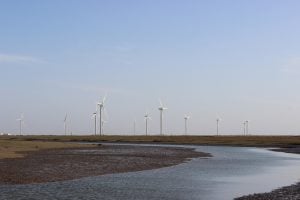With around four million Cariocas and tourists expected to use Rio’s public transport network during next year’s Olympic Games, the city government hopes congestion and overcrowding will soon become part of its inglorious legacy.
The host city has one of the worst urban mobility indices in Brazil and it is working with Chinese companies in order to resolve its longstanding transport problems before throngs of sports fans arrive in late August.
Chinese company BYD is in negotiations with the local government to provide hybrid or electric buses for routes which connect the upmarket Zona Sul (south zone) to the city centre. The city administration plans to reduce the bloated fleet of around 2,000 buses and introduce more of the fuel-efficient vehicles which currently make up less than half of all those operating in the city.
These new articulated or bi-articulated models are capable of transporting 140 or 200 passengers and are likely to operate on the Bus Rapid Transport (BRT) system, which has segregated lanes. The new busses will form part of the Rapid Bus System (BRS) which uses regular buses capable of carrying an average 80 people in exclusive lanes at predefined times.
BYD will provide the green technology for the busses while Rio Grande do Sul-based manufacturer Marcopolo will supply the bodywork. In addition to the electric motor, BYD will also supply the chassis. By working in partnership to produce different components, the manufacture of the busses complies with Brazilian industrial legislation.
“This would facilitate the issue of local content,” said BYD Brasil’s Adalberto Maluf in conversation with Diálogo Chino. Maluf adds that the price of an electric bus in Brazil is 20% higher than that of a conventional model, but lower maintenance costs and the use of electricity offset the higher purchase price.
Rio’s new trains are also Chinese. Of the 201 trains operating on the city’s 8 lines, 100 were purchased from China. Brazil’s state-owned Supervia is overhauling Rio’s rail 270km rail network and 102 stations that cater to 800,000 passengers daily. Some vehicles are over 40 years old.
The supply of the trains assembled in the Chinese city of Changchun is the result of two agreements between the Rio de Janeiro State government and the Chinese consortium CMC/CNR/CRC worth R$2.4 billion (US$ 600million).
According to operations director of Supervia, João Gouveia, the company has saved 30% in energy consumption by using the Chinese trains, which are connected to the alternating current grid, as opposed to the old models which rely on a direct current traction system.
Gouveia explains that the units are automated and equipped with a state-of-the-art cooling system that can help passengers cope with Rio’s frequent temperatures of nearly 40 degrees. Some old Supervia’s trains will still be refurbished, but this will be carried out by the French company Alstom, which has a factory in Brazil.
MetrôRio, the company that transports roughly 850,000 people a day on Rio’s underground, has also turned to China to renovate its fleet. The network consists of 36 stations along two lines covering 42 kilometres and will soon complete Line 4, a new branch which will have six new stations and will add a further 16 kilometres to the network.
MetrôRio initially purchased 19 Chinese trains, manufactured by CNR, with the first delivered in 2012. The second batch, consisting of 15 trains, arrived earlier this year. Initially intended for sole use on Line 4, these new trains are running on lines 1 and 2, while the older vehicles are upgraded.
However, the introduction of the new trains, which was funded by a US$ 600 million loan from the World Bank, has not run entirely smoothly. The Chinese models are larger and their introduction has necessitated the adaptation of some stations and tunnels.
Along with crime and pollution, smooth-running transport is one of Rio’s biggest concerns in the run-up to the Olympic Games. MetrôRio and Supervia have experienced a swell in passengers in recent years as the city has turned into a building site. The downtown region, where the port area has been remodelled for the installation of the modern Light Tracked Vehicle (VLT) tram system capable of carrying 420 passengers at a time, has been especially hard hit.
This multimodal system and the development of the port zone have caused road closures, restricted parking on public thoroughfares and exacerbated traffic jams, forcing locals to switch to trains.
But the local government hopes that the increase in motorists using busses and trains in the run up to the 31st summer Games signals and end to Rio’s chronic transport problems, not a false start.






